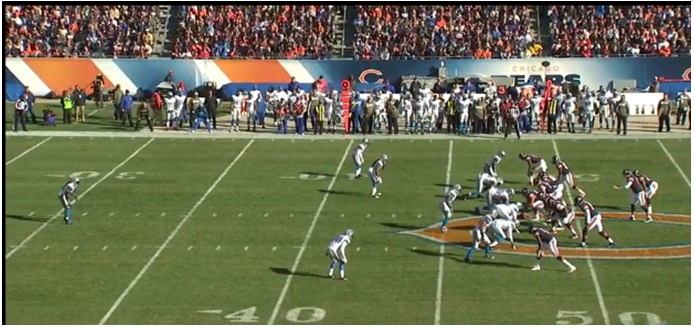The Arizona Cardinals have shredded opposing defenses up to
this point in the season. The beauty of their offense is how they execute
simple concepts at a higher level than the average NFL team, both in the
running game and the passing game.
The running game is incredibly simple. The Cardinals want to
create double teams at the point of attack, plain and simple. Their main run
play is a simple dive play out of a single back formation. The video below
shows an example of their dive play. Well executed double teams that climb up
to the second level.
They will also call “bounce”, which is the same as dive,
except the running back will bounce the play to the outside. Bounce takes
advantage of edge defenders that cheat inside to help the dive play. They will
also occasionally mix in Power and Counter schemes.
Make no mistake about it, the Cardinals offense is based on
creating big plays in the passing game. In the passing game, Carson Palmer has
been reading defenses at a very high level. A great example of how he is embracing
the concepts that head coach Bruce Arians calls is a touchdown he threw midway
through the second quarter against Seattle in week 10. Before we can understand
how the touchdown came to be, we must start with a play in the first quarter.
The play call is what many coaches refer to as the “flood”
or “sail” concept. Almost every high school, college, and NFL teams run a
version of this play. The play is designed to stretch the field vertically,
with a high, medium, and low target spaced out on the sideline. This play is
typically favored against teams that run cover three, which Seattle uses extensively.
Typically, the middle level is where the quarterback is
looking to throw the ball, with the low level route as a check down. Palmer
does a nice job of timing his throw to hit the middle level receiver before the
hook/curl defender (in this case, the strong safety) has a chance to trigger
down and make a play.
The Cardinals ran this play twice in the first quarter.
Click the video link below for one of the plays:
Many coaches will often tell the quarterback that the deep
receiver is just a decoy in the “flood” concept, in order to simplify the read
and make it easier for the quarterback to get the ball out on time. After
Palmer completed a few of the middle level throws, the Seahawks get closer and
closer to making a play on the ball. Palmer is aware of this, and it pays off
big for him. The third time the Cardinals call the “flood concept” they score a
touchdown.
Palmer notices Richard Sherman, the corner to the side of
the flood concept, cheating the middle out route. This opens up the deep receiver
for a touchdown. The receiver is wide open, so to the untrained eye it
looks like an easy read and an easy throw. The difficult part is that this
receiver isn’t even supposed to be an option to throw the ball to on the play.
Palmer is playing at such an elite level, that all his eligible receivers are a
viable option to him. Clock the link below to watch the touchdown:
The Cardinals make good use of simple concepts in both their
run game and pass game. If Carson Palmer continues playing at this elite level,
the Cardinals will be a very dangerous team in the playoffs and are my pick to
win the Super Bowl.
If you are interested in other concepts Bruce Arians and the
Cardinals use, check out these links to previous articles I have written:
http://theofficialpetersreport.blogspot.com/2014/12/play-of-day-shake-route.html
P.S.: My Book is now available on Amazon














